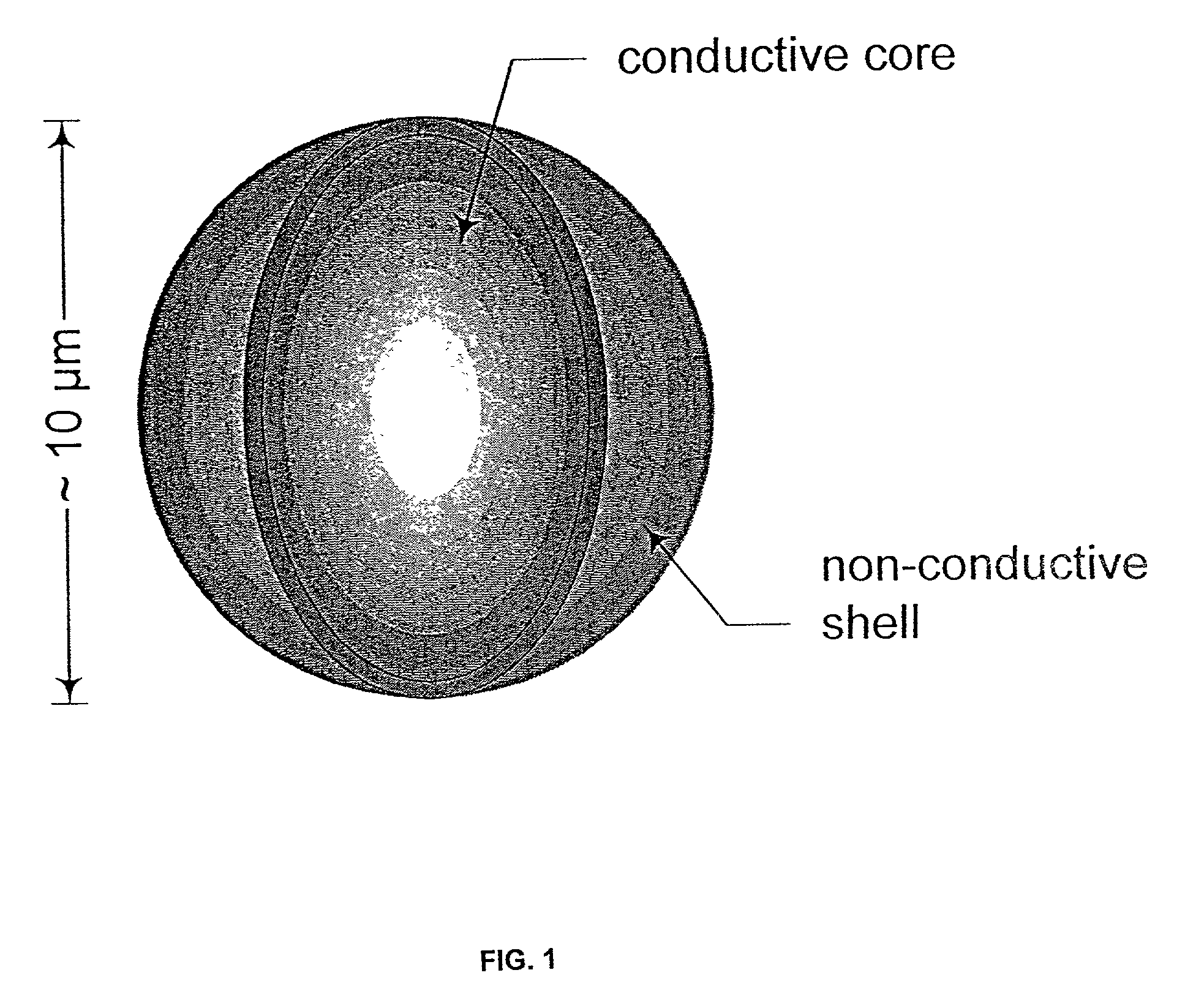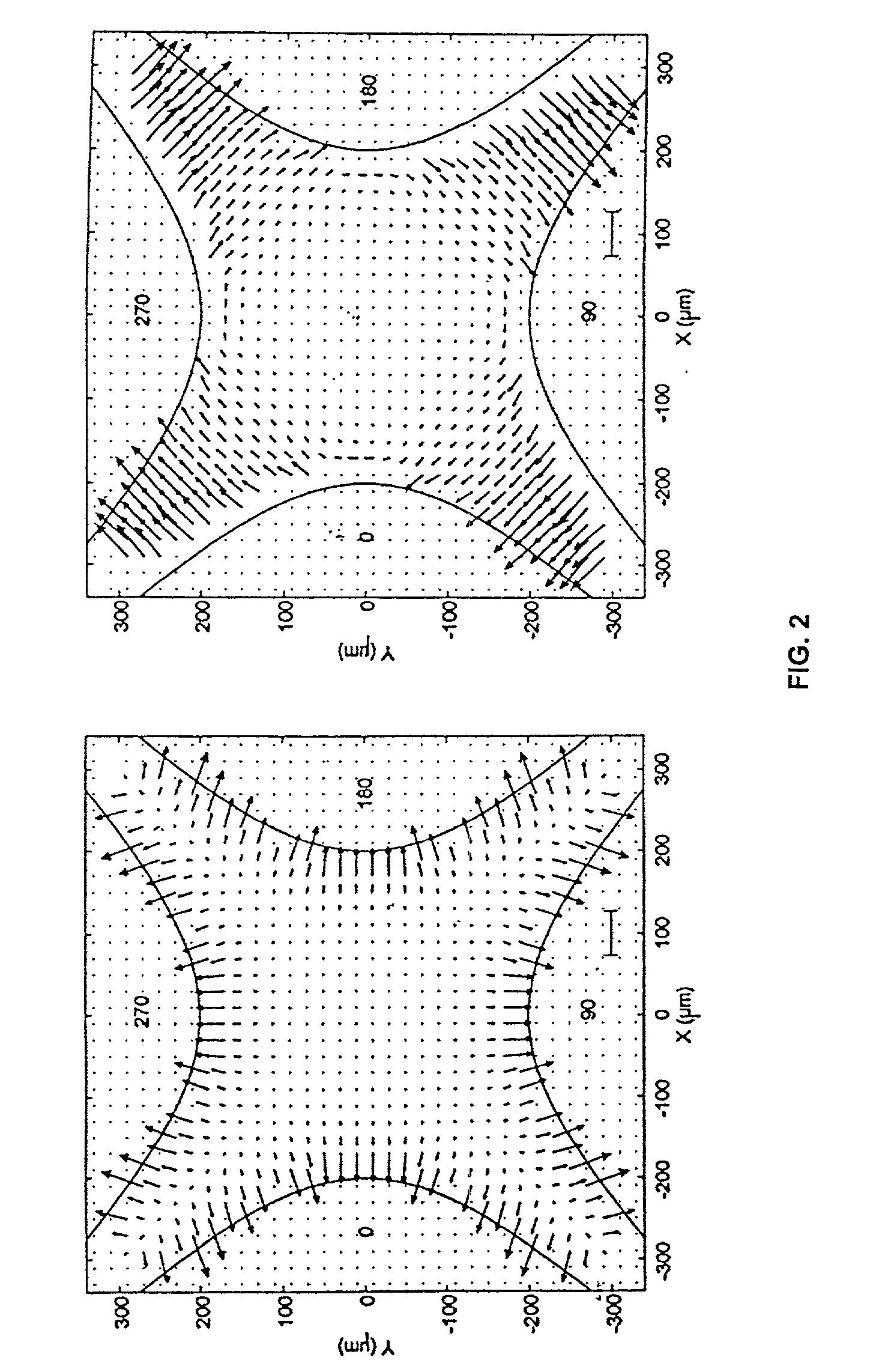Forming and modifying dielectrically-engineered microparticles
a technology of dielectric engineering and microparticles, applied in the field of forming and modifying dielectrically engineered microparticles, can solve the problems of not allowing for a method whereby analytes may be indexed, detected, and manipulated, and not allowing for the separate manipulation of many different types of analytes
- Summary
- Abstract
- Description
- Claims
- Application Information
AI Technical Summary
Problems solved by technology
Method used
Image
Examples
example 1
Engineered Microparticle Design Considerations
[0208] Life science research typically requires analysis of particles that range in size from about 100 nm to 10 .mu.m in diameter. The main forces acting on particles in this size range are sedimentation forces and randomizing forces due to Brownian motion. For a particle of radius 1 .mu.m and density of 1.05 g / cm.sup.3 suspended in aqueous medium (.rho.=1.00 g / cm.sup.3) at 25.degree. C. the sedimentation and Brownian forces each have magnitude of approximately 2.times.10.sup.-15 N.
[0209] To effectively use conventional dielectrophoresis as a manipulating force, the cDEP force must be greater than the other forces acting on the particle, and in one embodiment, about an order of magnitude greater than the other forces acting on the particle. According to Eq. 4, if Re(f.sub.CM)=0.5, then .gradient.E(rms).sup.2 should be approximately 9.times.10.sup.12V.sup.2 / m.sup.3 to give a cDEP force that is ten times greater than the sedimentation or ...
example 2
Experimental Studies
[0223] Silver-coated, hollow glass spheres were obtained from Potters Industries (Valley Forge, Pa.) and custom encapsulated in varying thicknesses of polystyrene by Theis Technology (St. Louis, Mo.) using a surfactant-free microencapsulation protocol. The resulting microparticle structure was similar to that depicted in FIG. 1. Upon application of an inhomogeneous electric field from a castellated, interdigitated electrode array, microparticle manipulation was accomplished by switching the field frequency and voltage. Dielectric responses varied in accordance with the predictions of Eqs. 4 and 7. The results confirm the analysis presented here and indicate that both the dielectric and conductive properties of the polystyrene coating define microparticle behavior as expected. Experiments using dielectric ferrite microparticles from Dynal, Inc. (Lake Success, N.Y.) also confirmed that magnetic and DEP forces may be used simultaneously for microparticle manipulatio...
example 3
Applications of Engineered Microparticle Technology
[0224] The utility of microparticle-based technologies for the identification, manipulation and isolation of target cells is universal. Recently, the use of microparticles in molecular biology has become widespread and promises to redefine the methodologies employed in life sciences studies wherever cell or molecular targeting or recognition is required. Yet current approaches are one-dimensional and offer little flexibility. For instance, parallel probing of multiple targets is not possible, targets may only be attracted to a collection site so that negative selection (the preference in some sorting applications) is difficult if not impossible, and sorting is essentially digital (targets cannot be discriminated according to binding efficiencies but only according to whether or not they bind any number of microparticles ranging from one to tens of thousands). The methods described here overcome these limitations and offer the potent...
PUM
| Property | Measurement | Unit |
|---|---|---|
| radius | aaaaa | aaaaa |
| conductivity | aaaaa | aaaaa |
| thickness | aaaaa | aaaaa |
Abstract
Description
Claims
Application Information
 Login to View More
Login to View More - R&D
- Intellectual Property
- Life Sciences
- Materials
- Tech Scout
- Unparalleled Data Quality
- Higher Quality Content
- 60% Fewer Hallucinations
Browse by: Latest US Patents, China's latest patents, Technical Efficacy Thesaurus, Application Domain, Technology Topic, Popular Technical Reports.
© 2025 PatSnap. All rights reserved.Legal|Privacy policy|Modern Slavery Act Transparency Statement|Sitemap|About US| Contact US: help@patsnap.com



